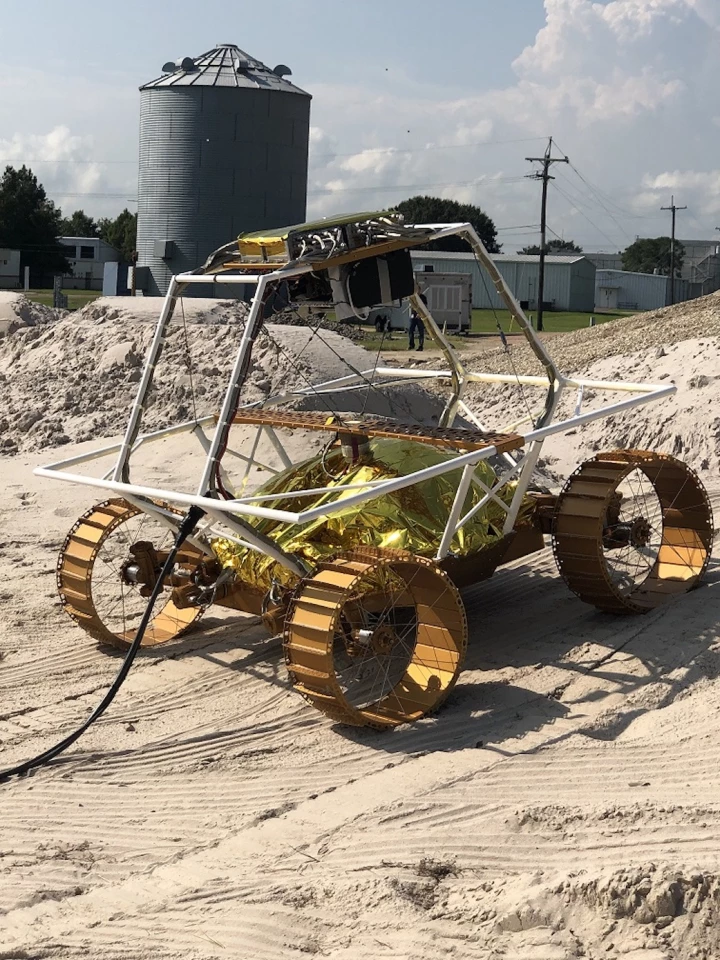The availability of important resources will be key to the success of a future lunar outpost, and there may be none more important than the stuff of life. To gain a clearer picture of water ice availability at the Moon’s South Pole, NASA has announced a new mission to send in a lunar rover by the name of VIPER to investigate.
Rock-solid signs of water ice at the Moon’s South Pole first emerged when NASA crashed its LCROSS spacecraft into a nearby crater 10 years ago. Studies since have continued to hint at how much may be awaiting future explorers, but VIPER (Volatiles Investigating Polar Exploration Rover) is the first dedicated mission to study these possibilities up close.
The South Pole is the anticipated initial landing site for NASA’s Artemis program, which aims to place the first woman and next man on the Moon in 2024. All going to plan, the VIPER rover will arrive two years beforehand, collecting data and measurements of the water ice in the region.
Around the size of a golf cart, the rover is equipped with four scientific instruments, including a 1-meter-long (3.3-ft) drill. Insertion of the drill will be guided by the rover’s Neutron Spectrometer System, which is built to detect wetter areas below the surface. The samples it pulls form these drilling sites will then be analyzed by another pair of onboard spectrometers.

“It’s incredibly exciting to have a rover going to the new and unique environment of the South Pole to discover where exactly we can harvest that water,” says Anthony Colaprete, VIPER’s project scientist. “VIPER will tell us which locations have the highest concentrations and how deep below the surface to go to get access to water.”
Further to that, Viper will also gather data on the variety of soil conditions and how they might be influenced by light and temperature. This could help inform scientists of other potential locations on the Moon where water ice could be hiding. In all, VIPER will spend 100 days combing the surface for signs of water, with its data to be used to form the first global water map of the Moon.
“The key to living on the Moon is water – the same as here on Earth,” says Daniel Andrews, the project manager of the VIPER mission and director of engineering at NASA’s Ames Research Center in Silicon Valley. “Since the confirmation of lunar water-ice 10 years ago, the question now is if the Moon could really contain the amount of resources we need to live off-world. This rover will help us answer the many questions we have about where the water is, and how much there is for us to use.”
The video below provides an overview of the VIPER mission, which is expected to land at the Moon's South Pole in December 2022.
Source: NASA





